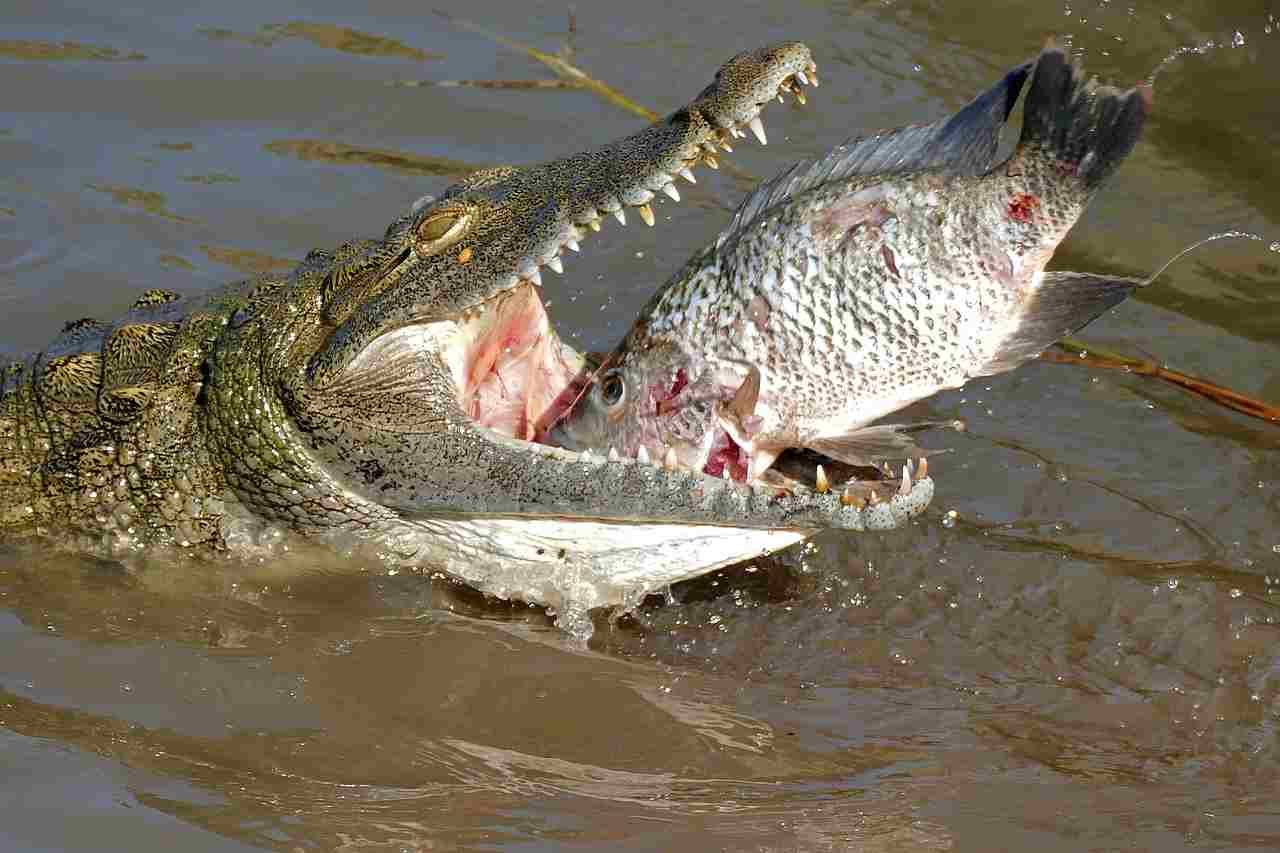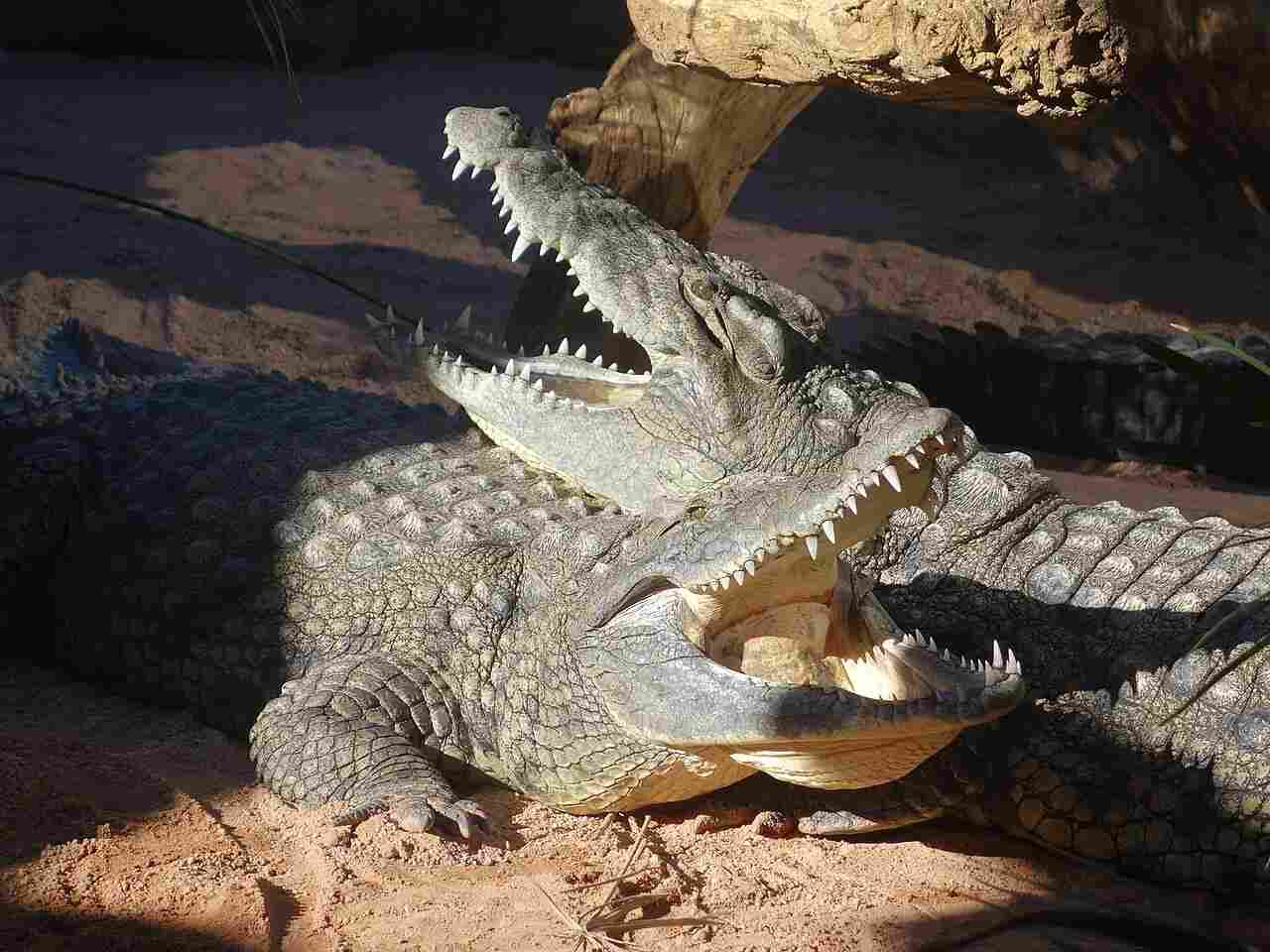Chinese Alligator Vs American Alligator Size, Weight. Overall Comparison
In an envisioned confrontation between the Chinese alligator and the American alligator, two species sharing taxonomic and physiological similarities, we explore the potential dynamics of this scenario. Belonging to the same Crocodylia order, these alligators can be differentiated by features such as overall length, weight, size, head shape, and snout. This analysis aims to highlight their shared ancestry while asserting that, in a fight, the American alligator would likely emerge victorious against the Chinese alligator due to its larger size, greater weight, larger mouth, and more powerful jaws.
Chinese Alligator vs American Alligator: Assessing the Likely Victor in a Confrontation
In a hypothetical scenario involving the Chinese alligator and the American alligator, two alligator species with taxonomic and physiological similarities, the outcome of a fight is influenced by their differences in overall length, weight, size, head shape, and snout. While both are formidable predators, the advantages in favor of the American alligator make it the likely victor in this hypothetical confrontation.
I). Taxonomic and Physiological Similarities:
– The Chinese alligator and the American alligator share taxonomic and physiological similarities, both belonging to the Crocodylia order. Physiologically, they exhibit common characteristics as formidable predators.
II). Differentiating Features:
– To differentiate between the two, certain features can be observed. The American alligator is generally larger, heavier, and has distinct differences in overall length, size, head shape, and snout when compared to the Chinese alligator.
III). American Alligator’s Size, Weight, and Jaw Advantages:
– The American alligator, being larger and heavier, possesses a larger mouth and more powerful jaws compared to the Chinese alligator. These advantages contribute to the American alligator’s effectiveness as a predator, providing it with a significant edge in confrontations.
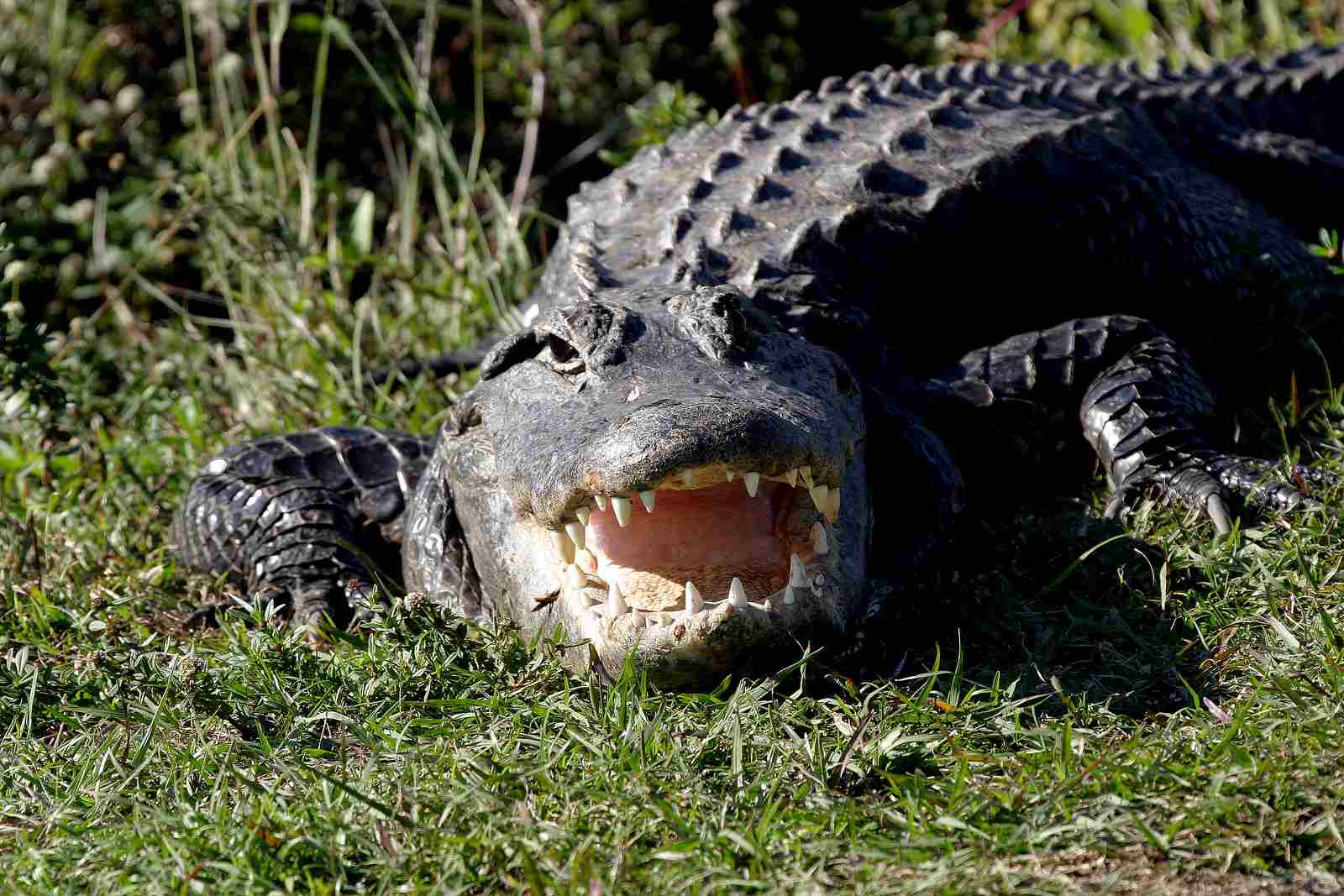
IV). Chinese Alligator’s Comparative Disadvantages:
– The Chinese alligator, while formidable in its own right, is at a comparative disadvantage in a fight against the American alligator due to its smaller size, lighter weight, and the limitations of its jaw strength.
V). Overall Dynamics:
– In this hypothetical scenario, the American alligator would likely win in a fight against the Chinese alligator due to its larger size, greater weight, larger mouth, and more powerful jaws. While both species share taxonomic and physiological similarities, the overall dynamics favor the American alligator in this envisioned confrontation within the Crocodylia order.
*Details of Comparison
| Criteria | Chinese Alligator |
American Alligator
|
| Appearance | Smaller, darker | Larger, lighter |
| Size | Averages around 6.6 feet |
Can reach 13 to 15 feet
|
| Weight | Around 80 to 100 pounds |
Up to 500 to 1,000 pounds
|
| Bite Force (PSI) | Approximately 2,000 PSI |
Stronger at 2,125 PSI
|
| Offensive Advantages | Sharp teeth, powerful bite |
Sharp teeth, powerful bite
|
| Defensive Advantages | Quick in water, agile |
Thick hide, powerful tail
|
| Speed | Up to 20 km/h | 32 km/h in water |
| Agility | Highly agile in water and on land |
More agile in water
|
| Overall Physical Capacity | Balanced combination |
Generally higher overall capacity
|
| Habitat Preference(s) | Slow-moving waters |
Various freshwater habitats
|
| Tracks | Smaller footprints | Larger footprints |
| Lifespan | Up to 50 years or more | 30 to 50 years |
| Feeding | Carnivorous with some variation |
Carnivorous with some variation
|
| Intelligence | Problem-solving abilities |
Complex behaviors
|
| Social Behavior | Exhibits social behaviors |
Exhibits social behaviors
|
| Reproduction | Oviparous, nest-building |
Oviparous, nest-building
|
| Parental Behavior | Females guard nests |
Females guard nests
|
| Proximity to Humans | Historically remote areas |
Can inhabit areas near humans
|
| Behavior Toward Humans | Generally shy |
Can display aggressive behavior
|
| Danger to Humans | Rarely poses direct threat |
Can be dangerous, occasional attacks
|
| Precautions | Conservation efforts focus on habitats |
Management includes education, habitat protection
|
| Conservation Status | Critically Endangered | Least Concern |
Key Points
- Chinese alligator is generally smaller and darker.
- American alligator is larger, with a lighter coloration.
- American alligator has a stronger bite force.
- American alligator is generally larger and heavier.
- Both exhibit sharp teeth and powerful bites.
- American alligator has thicker hide and a powerful tail for defense.
- American alligator is faster in water.
- Chinese alligator is highly agile in both water and on land.
- American alligator generally has a higher overall physical capacity.
- Chinese alligator prefers slower-moving waters, while American alligator thrives in various freshwater habitats.
- Both follow oviparous reproduction with nest-building behavior and exhibit maternal care.
- American alligator can be found closer to human-inhabited areas.
- American alligator may display more aggressive behavior toward humans.
- Chinese alligator rarely poses a direct threat to humans.
- Conservation status: Chinese alligator is Critically Endangered, American alligator is Least Concern.
1. Taxonomy
Chinese Alligator (Alligator sinensis):
Family: Alligatoridae
Genus: Alligator
Species: sinensis
American Alligator (Alligator mississippiensis):
Family: Alligatoridae
Genus: Alligator
Species: mississippiensis
2. Appearance
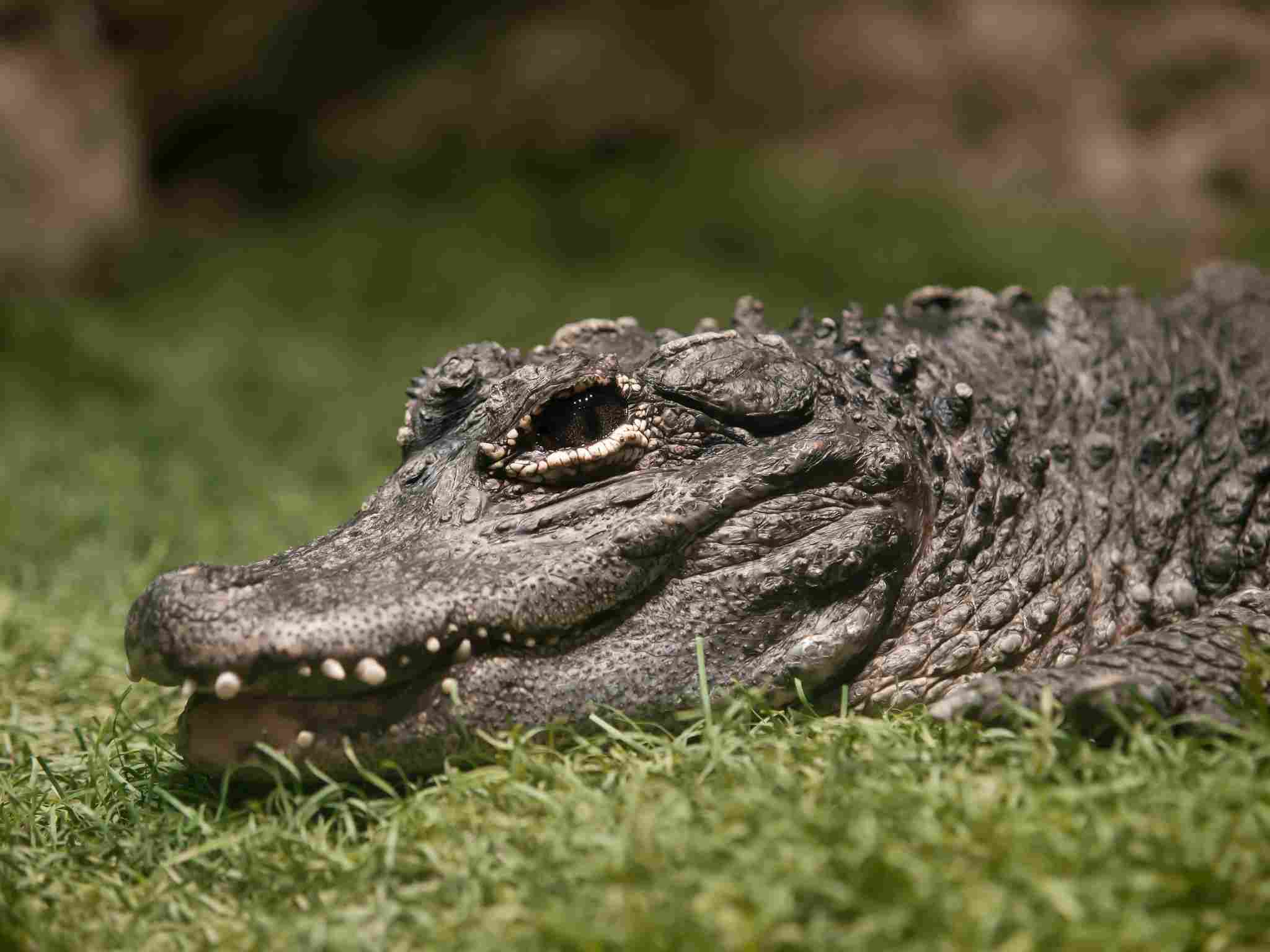
Chinese Alligator:
Smaller in size with a darker coloration.
Typically 5 to 7 feet in length.
Short, stout snout and a pronounced bony ridge behind the eyes.
American Alligator:
Larger, ranging from 10 to 15 feet in length.
Lighter in color, often exhibiting a grayish hue.
Broad, U-shaped snout with a less prominent bony ridge.
Comparison:
Chinese alligators are visibly smaller and have a darker coloration compared to the larger and lighter American alligators.
Ecological Implications:
Size and coloration impact camouflage and hunting strategies in their respective habitats.
3. Size
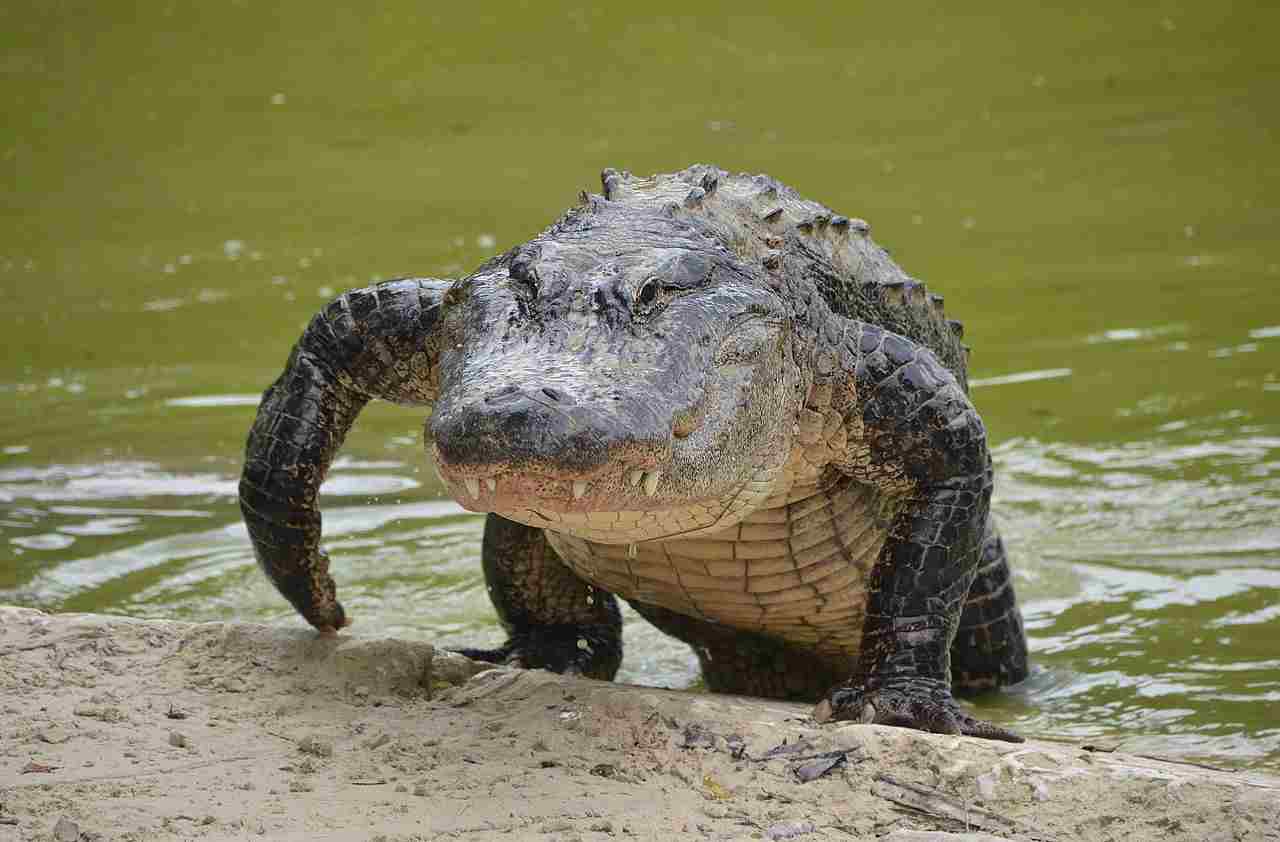
Chinese Alligator:
Adult males average around 6.6 feet, females slightly smaller.
American Alligator:
Adult males can reach lengths of 13 to 15 feet, females smaller.
Comparison:
Chinese alligators are significantly smaller than their American counterparts, impacting their roles within their ecosystems.
Ecological Implications:
Size influences predator-prey dynamics, competition, and overall ecological balance within their habitats.
4. Weight
Chinese Alligator:
Adult males weigh around 80 to 100 pounds, females lighter.
American Alligator:
Adult males can weigh up to 500 to 1,000 pounds, females lighter.
Comparison:
Chinese alligators have substantially less body mass compared to the robust American alligators.
Ecological Implications:
Weight affects energy requirements, predation efficiency, and interactions with other species.
5. Bite Force (PSI – Pounds per Square Inch)
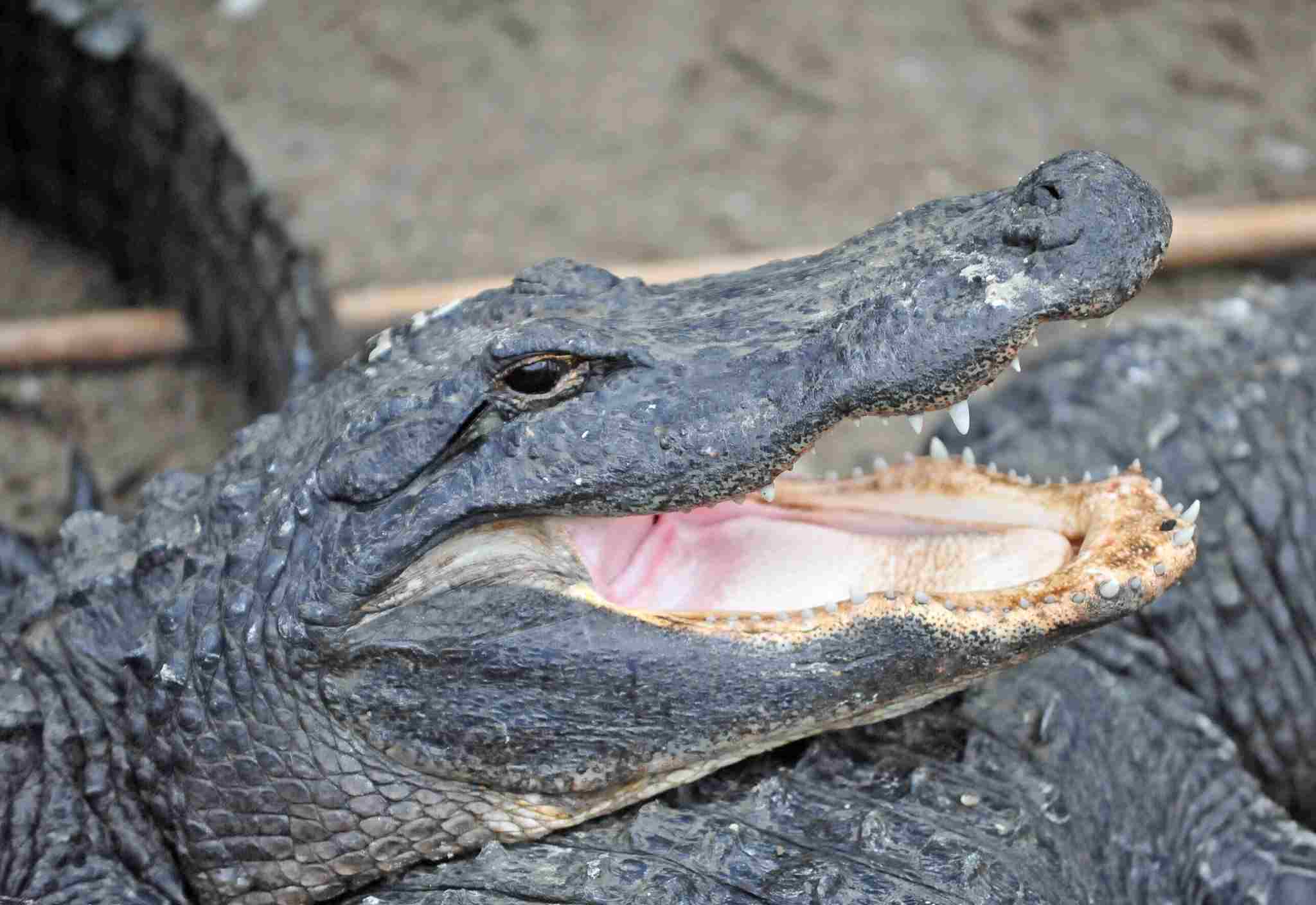
Chinese Alligator:
Bite force around 2,000 PSI.
American Alligator:
Stronger bite force, estimated at 2,125 PSI.
Comparison:
American alligators possess a slightly stronger bite force than Chinese alligators.
Ecological Implications:
Bite force impacts prey capture and processing, influencing the types of prey each species can effectively consume.
6. Physical Offensive Advantages
Chinese Alligator:
Sharp teeth and a powerful bite.
Agile in water, capable of ambushing prey efficiently.
American Alligator:
Strong bite, muscular build, and well-adapted for ambushing prey.
Comparison:
Both species exhibit formidable offensive capabilities, utilizing their bite strength and ambush strategies for hunting.
Ecological Implications:
These offensive advantages influence their roles as top predators in their respective ecosystems.
7. Physical Defensive Advantages
Chinese Alligator:
Quick in water, can retreat to escape threats.
American Alligator:
Thick, tough hide and powerful tail for defense.
Comparison:
American alligators have more pronounced physical defenses, while Chinese alligators rely on agility and aquatic escape.
Ecological Implications:
These defensive traits impact interactions with larger predators and contribute to the overall ecosystem dynamics.
8. Speed (Km/hour or Mile/hour)
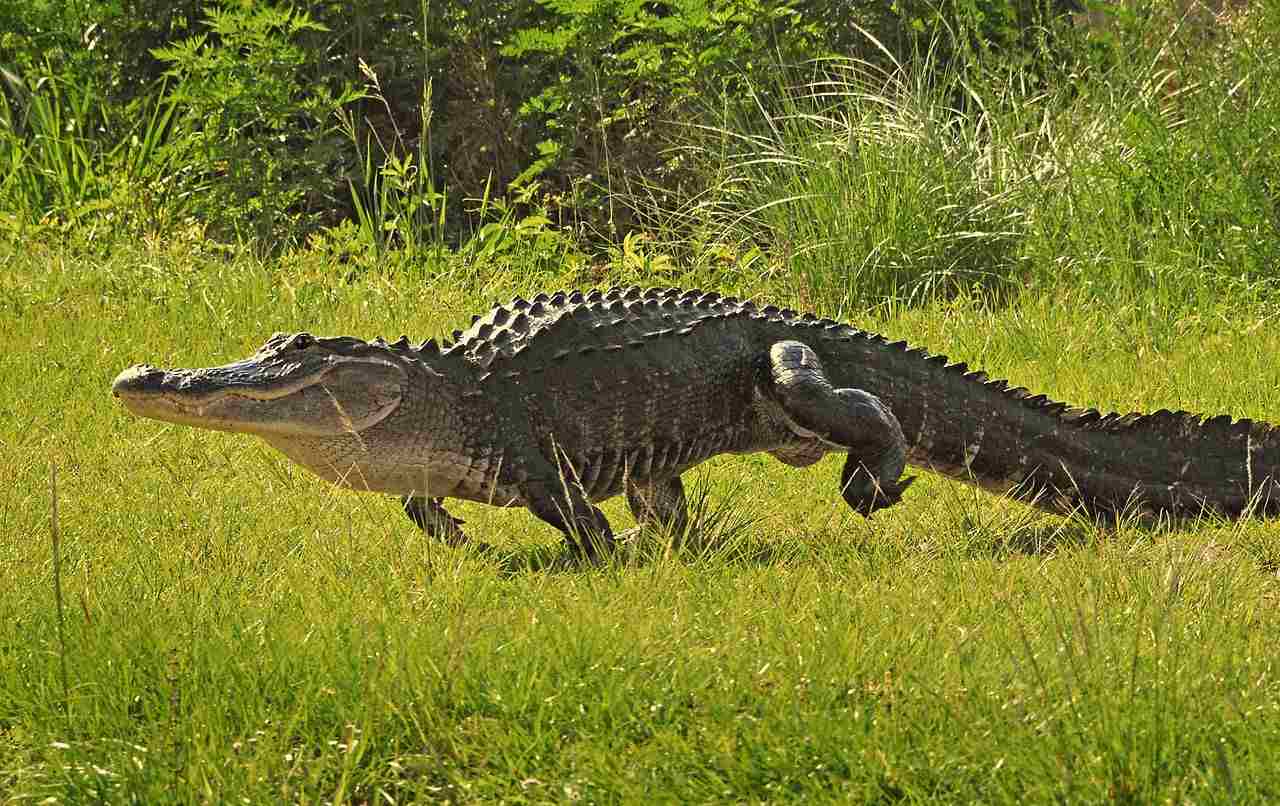
Chinese Alligator:
Capable of speeds up to 20 km/h (12 mph) in short bursts.
American Alligator:
Surprisingly fast in water, reaching speeds of 32 km/h (20 mph).
Comparison:
American alligators exhibit higher speed in aquatic environments compared to Chinese alligators.
Ecological Implications:
Speed influences hunting success, evading predators, and overall survival strategies in their habitats.
9. Agility
Chinese Alligator:
Highly agile in water and on land.
American Alligator:
Agile in water, less so on land.
Comparison:
Chinese alligators showcase greater agility both in aquatic and terrestrial environments.
Ecological Implications:
Agility affects hunting efficiency and response to environmental changes, contributing to their ecological roles.
10. Overall Physical Capacity
Chinese Alligator:
Exhibits a balanced combination of agility, bite strength, and moderate size.
American Alligator:
Larger size, robust build, and strong bite contribute to formidable overall physical capacity.
Comparison:
American alligators generally possess a higher overall physical capacity due to their larger size and more powerful build.
Ecological Implications:
Overall physical capacity influences their roles as top predators, shaping their impact on the ecosystem.
11. Habitat Preference(s)

Chinese Alligator:
Prefers slow-moving freshwater habitats like rivers, ponds, and marshes.
American Alligator:
Thrives in a variety of freshwater habitats including swamps, lakes, and rivers.
Comparison:
While both species prefer freshwater environments, Chinese alligators specifically inhabit slower-moving waters.
Ecological Implications:
Habitat preferences impact the distribution of these species and their interactions with other aquatic organisms.
12. Tracks
Chinese Alligator:
Smaller footprints with distinct webbed toes.
American Alligator:
Larger footprints with distinct webbed toes.
Comparison:
Track size and pattern provide clues to distinguish between the two species.
Ecological Implications:
Tracking can aid researchers in monitoring and understanding the distribution and behavior of these alligators in the wild.
13. Lifespan
Chinese Alligator:
Can live up to 50 years or more.
American Alligator:
Typically lives 30 to 50 years in the wild.
Comparison:
Both species have relatively long lifespans, with Chinese alligators potentially having a slightly longer life expectancy.
Ecological Implications:
Lifespan influences population dynamics and ecological roles within their respective ecosystems.
14. Mode of Feeding
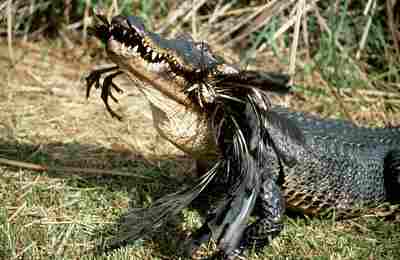
Chinese Alligator:
Primarily carnivorous, feeding on fish, amphibians, and small mammals.
American Alligator:
Carnivorous diet including fish, turtles, birds, and mammals.
Comparison:
Both species share a carnivorous diet, but the specific prey items may vary.
Ecological Implications:
Feeding habits contribute to the regulation of prey populations, influencing the overall balance in their ecosystems.
15. Intelligence
Chinese Alligator:
Displays problem-solving abilities, social learning, and memory.
American Alligator:
Exhibits complex behaviors, indicating a level of intelligence.
Comparison:
Both species demonstrate cognitive abilities, adapting to their environments.
Ecological Implications:
Intelligence plays a role in foraging strategies, social interactions, and responses to environmental changes.
16. Social Behavior
Chinese Alligator:
Can exhibit social behaviors, particularly during the breeding season.
American Alligator:
Displays social behaviors, especially during mating and nesting periods.
Comparison:
While primarily solitary, both species show social interactions during specific life stages.
Ecological Implications:
Social behavior influences mating rituals, nesting, and overall population dynamics.
17. Mode of Reproduction

Chinese Alligator:
Nest-building, oviparous reproduction.
American Alligator:
Oviparous reproduction with nest-building behavior.
Comparison:
Both species follow a similar mode of oviparous reproduction with nest construction.
Ecological Implications:
Reproductive strategies impact population dynamics, with nesting behaviors influencing habitat structure and availability for other species.
18. Parental Behavior
Chinese Alligator:
Females guard nests, showing maternal care.
American Alligator:
Females also guard nests and provide maternal care.
Comparison:
Both species exhibit maternal care, protecting nests and offspring.
Ecological Implications:
Parental behavior contributes to the survival of offspring, affecting the overall population dynamics.
19. Proximity to Human-Inhabited Areas

Chinese Alligator:
Historically found in more remote areas of China.
American Alligator:
Can inhabit areas close to human populations, including wetlands and golf courses.
Comparison:
American alligators are more adaptable to human-inhabited areas than Chinese alligators.
Ecological Implications:
Proximity to human settlements influences conservation efforts, potential conflicts, and management strategies.
20. Behavior Toward Humans
Chinese Alligator:
Generally shy and avoids human interaction.
American Alligator:
Can display aggressive behavior, especially if provoked or if humans approach nesting sites.
Comparison:
While both species may avoid humans, American alligators are more prone to aggressive reactions.
Ecological Implications:
Human interactions impact their behavior and can lead to conservation challenges.
21. Danger Posed to Humans
Chinese Alligator:
Rarely poses a direct threat to humans due to its smaller size.
American Alligator:
Can be dangerous, with occasional attacks reported, especially in areas with human-wildlife conflicts.
Comparison:
American alligators present a higher potential danger to humans than their Chinese counterparts.
Ecological Implications:
Understanding the risk posed to humans is crucial for implementing effective conservation and safety measures.
22. Associated Precautions

Chinese Alligator:
Conservation efforts focus on preserving habitats and minimizing human disturbance.
American Alligator:
Management strategies include education on coexistence, habitat protection, and controlled removal in human-occupied areas.
Comparison:
Conservation measures vary based on the different ecological contexts and threats faced by each species.
Ecological Implications:
Precautions play a vital role in maintaining healthy populations and preventing conflicts between alligators and humans.
23. Conservation Status
Chinese Alligator:
Critically Endangered, with conservation programs aiming to protect remaining populations.
American Alligator:
Least Concern, thanks to successful conservation efforts and controlled hunting.
Comparison:
Chinese alligators face a more critical conservation status compared to the more stable population of American alligators.
Ecological Implications:
Conservation status reflects the overall health of ecosystems and the effectiveness of conservation measures.
Summary of Comparison
Appearance:
Chinese alligator: Smaller, darker.
American alligator: Larger, lighter.
Size:
Chinese alligator: Averages around 6.6 feet.
American alligator: Can reach 13 to 15 feet.
Weight:
Chinese alligator: Around 80 to 100 pounds.
American alligator: Up to 500 to 1,000 pounds.
Bite Force (PSI):
Chinese alligator: Approximately 2,000 PSI.
American alligator: Stronger at 2,125 PSI.
Physical Offensive Advantages:
Both exhibit sharp teeth and a powerful bite.
Physical Defensive Advantages:
American alligator has a thicker hide and a powerful tail for defense.
Speed:
Chinese alligator: Up to 20 km/h.
American alligator: 32 km/h in water.
Agility:
Chinese alligator: Highly agile in water and on land.
American alligator: More agile in water.
Overall Physical Capacity:
American alligator generally has a higher overall physical capacity.
Habitat Preference(s):
Chinese alligator prefers slower-moving waters.
American alligator thrives in various freshwater habitats.
Tracks:
Chinese alligator has smaller footprints.
American alligator has larger footprints.
Lifespan:
Chinese alligator can live up to 50 years or more.
American alligator typically lives 30 to 50 years.
Mode of Feeding:
Both are primarily carnivorous, with differences in specific prey items.
Intelligence:
Both species demonstrate problem-solving abilities.
Social Behavior:
Both show social behaviors during specific life stages.
Mode of Reproduction:
Both follow oviparous reproduction with nest-building behavior.
Parental Behavior:
Both exhibit maternal care.
Proximity to Human-Inhabited Areas:
Chinese alligator historically found in more remote areas.
American alligator can inhabit areas close to human populations.
Behavior Toward Humans:
Chinese alligator is generally shy.
American alligator can display aggressive behavior.
Danger Posed to Humans:
Chinese alligator rarely poses a direct threat.
American alligator can be dangerous, with occasional attacks reported.
Associated Precautions:
Conservation efforts vary based on species and ecological context.
Conservation Status:
Chinese alligator is Critically Endangered.
American alligator is Least Concern.
Conclusion
I). Similarities
Both Chinese and American alligators share carnivorous diets, oviparous reproductive strategies, and exhibit maternal care.
II). Differences
Significant differences include size, habitat preferences, danger posed to humans, and conservation status, highlighting the distinct ecological roles and challenges faced by each species.
